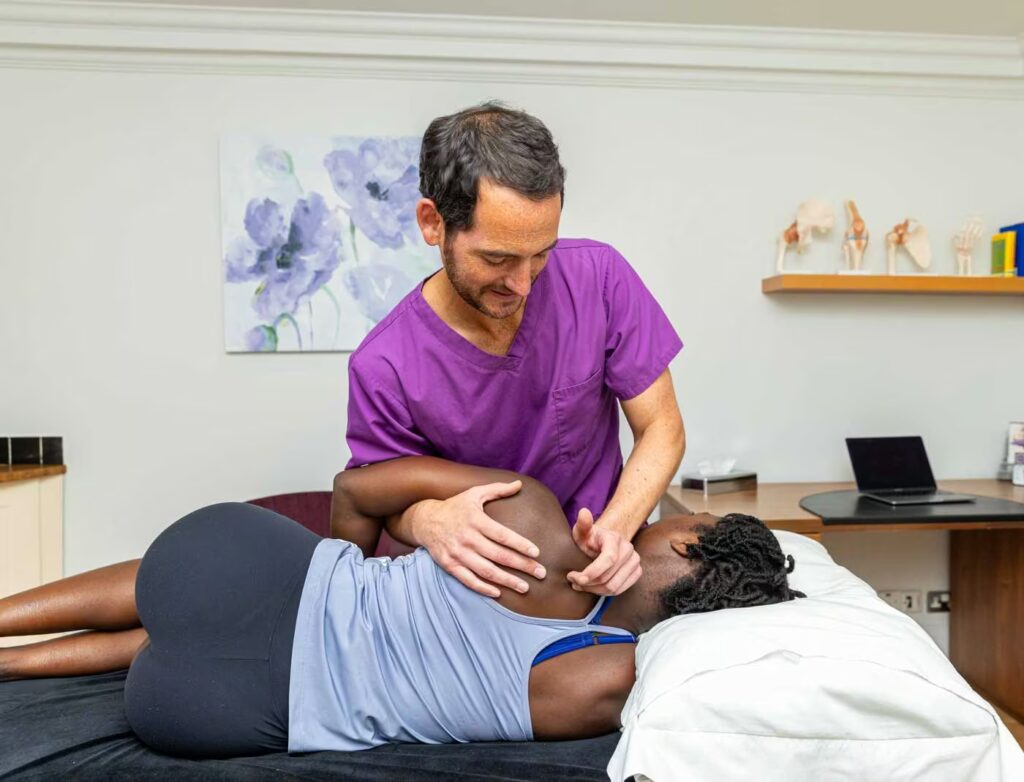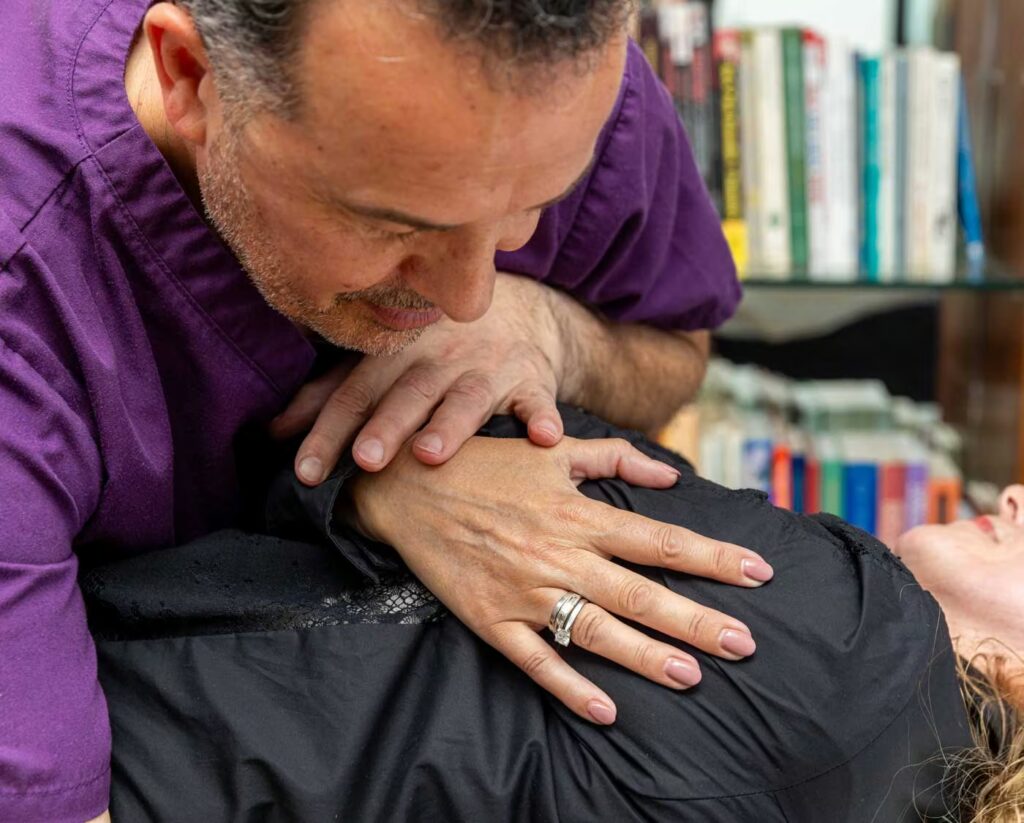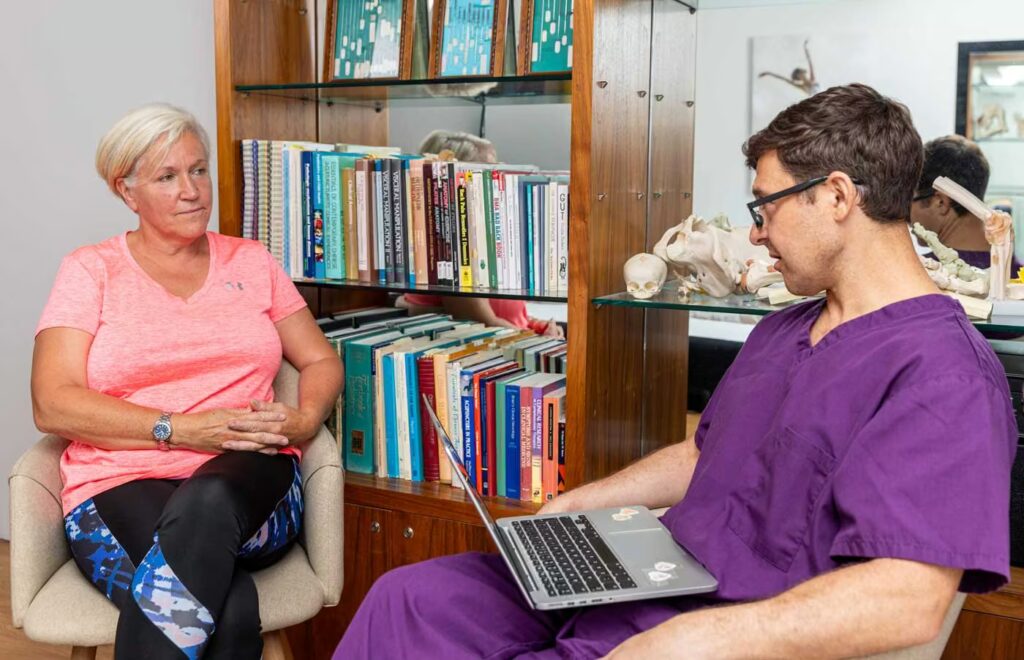Osteopathy

Treatment
Osteopathy
Osteopathy is based on the idea that the health of the body depends on bones, muscles, ligaments, and connective tissues working together in harmony. These structures working together in harmony improves the body’s natural healing ability and your overall health and wellbeing.
Osteopaths prioritise a holistic, whole-body approach, looking at how different parts of the body affect each other, rather than just treating the specific site of pain or discomfort. They leverage hands-on treatment to deliver effective, evidence-based treatment for long-term results.
What does osteopathy involve?
Osteopaths have a detailed knowledge of anatomy and physiology and a highly developed sense of touch which they use to detect and release areas of tension or structural imbalance.
Treatments and techniques will vary depending on the patient and the underlying condition but there are several common forms of therapy which include:
- Gentle pressure and soft tissue massage: to release muscle tension and improve blood and lymphatic flow
- Joint mobilisation: to improve range of motion
- Muscle and tissue stretching: to improve flexibility and relieve tightness
These techniques are designed to help:
- Reduce joint stiffness and muscle tension
- Support free movement within the spine and joints
- Improve overall body function and movement
- Bring about a greater feeling of wellbeing
What can osteopathy treat?
- Headaches
- Mechanical neck pain
- Generalised aches and pains including arthritic pain
- Work-related discomfort related to muscular and joint pain
- Lower back pain and sciatica
- General, acute and chronic back ache and back pain
- Joint pain including hip and knee pain from osteoarthritis
- Shoulder and elbow pain including frozen shoulder and tennis elbow
- Aches and pains during pregnancy
- Cramps
- Circulatory problems
- Digestion problems
- Muscle spasms
- Neuralgia
- Fibromyalgia
- Rheumatic pain

Why choose our Leeds osteopathy clinic?
- Fully qualified, General Osteopathic Council (GOsC)-registered osteopaths
- Multi-disciplinary team offering integrated care with complementary therapies
- Welcoming and accessible facilities with private treatment rooms
- Appointments available weekdays and Saturdays
- Trusted by the local community since 1993

Meet our qualified osteopaths
Osteopathy FAQs
What will happen at my first appointment?
On your first visit to the Good Health Centre, your osteopath will ask questions about your medical history and examine your body to make an in-depth assessment. You may be asked to remove some outer clothing and to perform some simple movements. Your osteopath will use their hands to identify any weakness or points of strain. This will help them to diagnose your condition and develop a treatment plan tailored specifically to your needs.
We advise you to wear loose clothing that you feel comfortable moving in. You are welcome to bring a friend or relative to be present throughout the consultation if it would help you to feel more comfortable.
Refer to the New Patients page for more information.
Does osteopathy treatment hurt?
Some soft tissue treatment and certain joint mobilisations or stretches may cause discomfort during treatment. Your osteopath will tell you what to expect and will ask you to tell them if you experience any pain. You may feel stiff or sore after your osteopathy treatment – this is a normal, healthy response and will subside within 24 to 48 hours.
Do I need a referral from a doctor?
No referral is necessary if you are paying for your treatment yourself. If you plan to pay with insurance, check the specific requirements outlined by your insurance company – some companies may require that you see your GP first.
How many treatments will I need?
The number of osteopathy treatments needed depends on the individual and their condition. We often find that a course of three to six treatments offers the greatest benefit to our patients managing common afflictions. Some chronic or complex conditions may need regular treatments to prevent a relapse. Your osteopath will discuss your likely course of treatment during your first visit.
How much does treatment cost?
Refer to the Pricing page for treatment costs.
How soon can I see an osteopath?
We try to reserve availability every day for emergency appointments, meaning we can oftentimes accommodate if patients need to see an osteopath that day. Call us at 0113 237 1173 if you are looking for a last-minute, day-of appointment.
